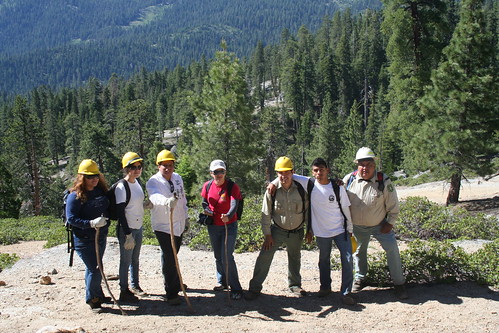
Although the U.S. Forest Service Planning Rule is still a draft document, it has helped to produce environmental change for one special group of involved students. Over the past year this special group of young adults attended planning rule public sessions, followed developing issues, and then provided some input of their own. Through their diligence and proactive engagement, some of their concerns have made it into the draft planning rule.
The group is the Central California Consortium (CCC), a Forest Service environmental education, minority outreach and recruitment program that serves as a bridge between the Forest Service, underserved areas, and community partners. One of their contributions to the Planning Rule is asking Forest Service employees to “come down from the mountains”, as the students aptly put it, and work with minority communities to help them understand the importance of our natural resources and how to best manage them.
Representatives from CCC were in Washington, DC this week to attend the planning rule public forum. Before the event, at a luncheon at the Forest Service Washington office, they spoke about their excitement at the prospects of being future leaders of the 30,000 employee strong agency. But more importantly they expressed gratitude that they have a voice and can give the agency important information to help better manage our nation’s natural resources.

One such example was from a student who is a first generation Asian-American. She said that in her family’s country of origin, which is primarily jungles and rainforest, it was not requisite to put out a fire when leaving a campsite as nothing could burn out of control. For this reason when her family would go to the national forest here, they would immediately be scrutinized and fined for not putting out a fire. Once the difference in flammable vegetation was explained to them they never again left a fire unattended.
And, as a another student cogently reminded those in attendance, the US minority community isn’t getting any smaller and will play a vital role in how we manage our nation’s public lands. You can view the group’s Fall/Winter 2010 newsletter for more information on the group’s activities and successes.
